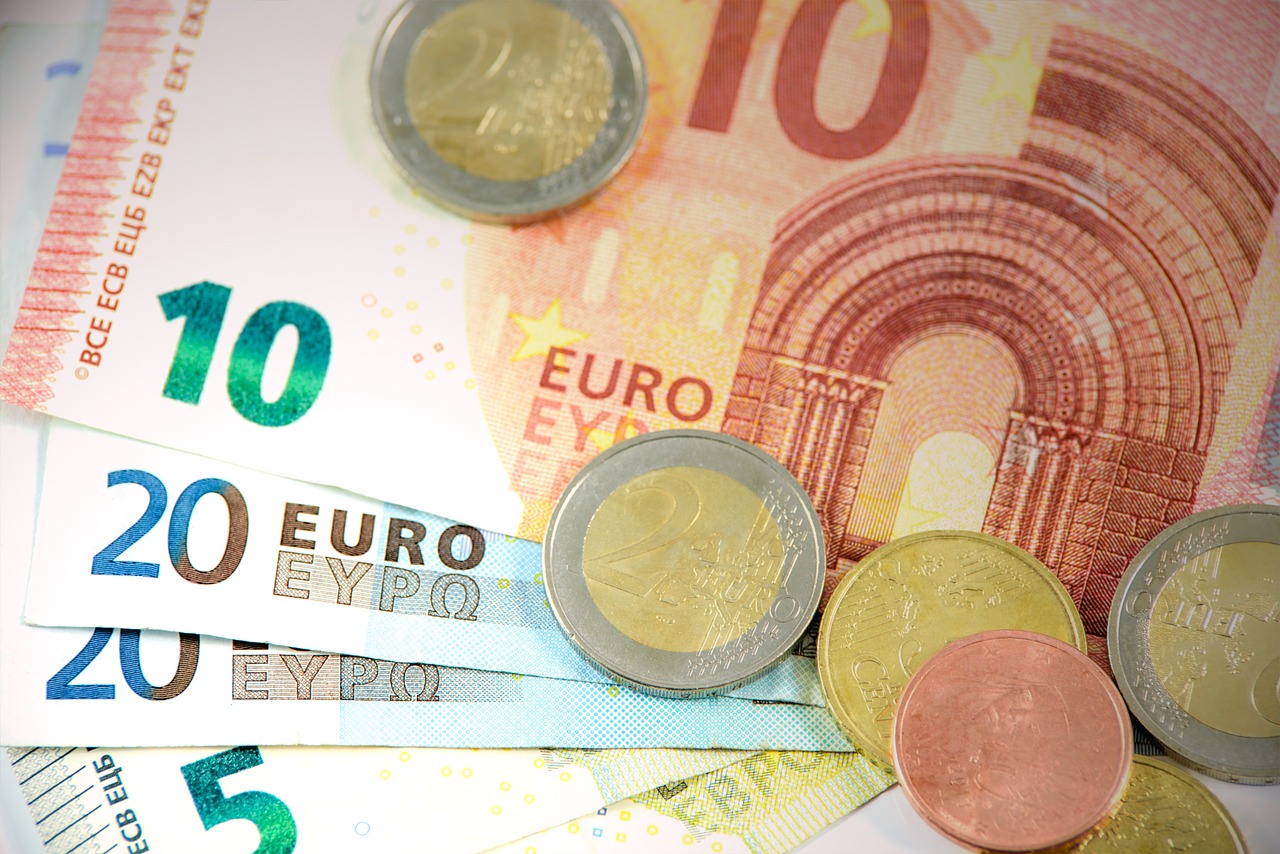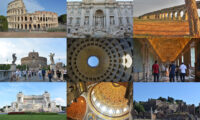Last Updated on: 7th April 2024, 11:02 pm
Americans dominate a LOT of the internet. They constantly assume everyone is either in or are from the US or do things the US way, and frequently express their amazement at culture shock. There are a lot of articles out there that talk about things people “wish they” knew before travelling to a certain country. But, if we are honest, most of them are simply culture shock stories are otherwise anecdotes that provide little use to the average traveller.
As a site that aims to provide pragmatic and realistic information, there is no place for that sort of bloated content on this website.
So without further ado, here are the 4 things you actually do need to budget for, or at least be aware of, when travelling in Italy, regardless of your budget, but especially if you are on a shoestring budget or are from a weaker currency.
#1: Coperto
Coperto, or cover charge, is a set fee in Italy charged to dine-in patrons in restaurants everywhere in Italy except fast food outlets, takeaways, and the Lazio region, including Rome, where it is actually illegal. More on that later. It is not a tip, and in Italy (except Rome and the Lazio region), it is not optional. Think of it as a flagfall. It is supposedly for covering bread, small condiments like oil and dip that they bring you at the start of a meal, and linen and cutlery. It is usually around 1-2€ per person, but higher in touristy places (3€ is the norm in Venice old town) and possibly more higher end restaurants.
Side note to Italy: This, especially the latter is quite silly since cutlery is included in the dining service everywhere around the world, and inherently essential to the practical components of consuming the meal so is part of the service. Are patrons supposed to bring their own cutlery then? And while you’re at it, why not have a separate charge to cover the rent and utilities too? Because all costs should have been considered in the final price of the food – everyone knows you are paying for the cooking, the venue rent, bills and wages when you pay for food at a restaurant. We the visitors, who supply you with tourism money, do not appreciate it, especially when you charge people for the bread they did not order.
Back to the point: In places besides Rome, Coperto is charged whether you eat the bread or not (you can try and tell them you don’t want the bread and see if they still charge – anyone with first hand experience, do leave a comment!). If you do not receive bread and condiments at the start of the meal, you may see a charge for pane or something similar afterwards. This means whatever budget you gave yourself for meals/food in Italy per person, you must add a few Euros to that for every person, unless you are going to take away or eat at fast food places the whole time you are in Italy. The exact amount varies, fancier and restaurants in touristy places may charge more (eg 3€ per person in Venice), and it its usually around 1-2€ per person but ranges between 1-7€ per person which could be a lot if you are counting every euro and come from a weaker currency. If you are backpacking and plan on eating at cheap places, between 1-3€ per person per dine-in meal is a good amount to budget for. The Coperto is added to your final bill so can be paid together by card or cash.
Is coperto a scam?
Many people say no, but let’s have a look at what the definition of a “scam” is.
A scam is an intentional scheme to obtain money or other things with monetary value in a dishonest way. Considering that businesses usually include the costs of everything in their final price, charging for something that is inherently part of the product or service separately does indeed seem like a scam. How are you supposed to eat the food without cutlery or the plate it came on? Most people would have expected the price on the menu to be the final price – it’s not nice to find out you also had to pay extra for the cutlery.
If the idea of charging a separate fee for cutlery ad basic table cloth sounds silly to you, that’s because it is, at least for most (but not all) of the rest of the world. After all, businesses usually include the costs of everything in their final price, charging for something that is inherently part of the product or service separately (the cutlery required to eat the meal is charged separately?!) does indeed seem like a scam. I mean, while we’re at it, why not also charge or the rent, utilities, waiting staff separately too?
Some look at by saying it is maintenance costs being charged separately, simply a different way of pricing things. An unusual method at the very least, I grant you that. But, it is also about charging people for things they never ordered and misled into believing it is complimentary but being forced to pay for it afterwards. this is definitely very scammy in my view.
Coperto in Rome and the Lazio region:
Although coperto charges are illegal in Rome, this does not stop many restaurants in Rome from purposely charging it to tourists who don’t know otherwise, taking advantage of them by not disclosing the truth. Actively hiding the truth and being deceptive makes it very much a scam.
But there is a caveat. Since coperto usually covers bread, restaurants in Rome can still charge “coperto” or “pane”, as long as it is specifically and separately listed on the menu (ie, if the amount they ask you for isn’t found on the menu, it is illegal). If it is not listed on the menu and they charge you for it afterwards, you can definitely dispute it. If it IS listed on the menu and they bring you unwanted bread at the start of your meal and you did not decline it, you will most likely have to pay. Otherwise, you can decline it and it should be removed from your receipt. An “opt out” only charge with no prior notice behaves entirely like a scam,
To avoid it, simply look for signs in the window or menus that are displayed outside the restaurant that say “No Coperto/No Cover charge”.
If you must dine at a restaurant in Rome/the Lazio region that does not specifically say they don’t charge coperto, save yourself the hassle of disputing it afterwards by asking before you agree to dine there, whether they charge it. Also, for non-Italian cuisine restaurants (say you dine at a Chinese or Thai restaurant instead, but in Italy) where they don’t serve bread before the meal, they can claim anything else is the “coperto” item after you finish your meal (that sauce on the side? The tablecloth? The napkin you used?). If they say they do charge it, in the interest of benefiting everyone by stamping out this illegal practice, remind them that coperto is illegal in the Lazio region and Rome.
Note that in other areas of Italy, you can avoid the coperto by taking away, but if you then decide to sit outside to eat your takeaway meal, you might be charged after all.
#2: City Tax
Places of accommodation are required by law to charge a “city tax” per person, per night of stay. This is between 1-3€ per person, per night.
How it it charged: Make sure you read the fine print when making a booking to see how the tax is charged: some places add the city tax to the room price and charge a total fee, others display a final fee for the room and state the city tax is extra. You may be asked to pay the city tax upon arrival separately in cash, and possibly exact change, because this fee is then handed over directly to the city council. This means you should plan to have cash, and even exact change, with you. Some places can get you change from a larger note, but if you stay at a self-check in place where you never see the host, you will likely be required to pay the city tax in exact change by leaving it in an envelope in a designated place.
The city tax also increases with increased facilities. Places that offer dining facilities/services, even small ones, will have to charge more (around 1€) than an otherwise compared place that only lacks a dining area. Something as small as a few small tables and chairs and a coffee bar that serves coffee and sandwiches can qualify it as having dining facilities and encounter a higher city tax, even if the rooms are no better than a hotel of a lower price point. So, to save a few euros, you can stay at a place that doesn’t have these facilities, if each euro matters a lot.
#3: Drinking water when dining in
If you dine in at a restaurant and want water, you are expected to pay for bottled water, which again, is quite stupid and a good way to deter customers, considering the ancient Romans built the entire aqueduct and water fountain system, an envy of the ancient world, to deliver free drinking water to its citizens and visitors, and tap water in Italy is drinkable.
Some places will bring you tap water for free in a jug or bottle at the start of a meal or even just have it ready for self serve, while other places will bring it to you if you ask, but not all places do. Most places do not serve tap water. But if you want to ask for it, ask for “acqua del rubinetto” or “acqua naturale” (still water) in Italian. I brought my own water and drank that in a restaurant and was not told off by staff – make of that what you will.
#4: Public Toilets
Like almost everywhere in Europe, most public toilets, including those at trains stations, charge for use, from 0,50 to 1,50 € per use per person in local currency, which again, considering one of ancient Rome’s claim-to-fame was their cleanliness and sewage system, is puzzling to say the least.
Regardless of your budget, you should always have spare change in 50 Euro cents and 1 and 2 Euro coins with you, per person, in case you do need to pay to use a public toilet, because the machines don’t accept card. You could have all the money in the world stored on a card but it would be no use when you really have to go ad they only accept coins. Small children can use them for free, only parents pay.
In restaurants, you can use the toilets for free if you are a dining patron, otherwise you will likely be charged. Alternatively, you can consider buying a small snack or drink if the price is the same anyway.
Always use the toilets when you can whenever you eat at a restaurant. Toilets in museums are typically free. You could get away with never using a paid public toilet by carefully planning your meals and toilet breaks and going to the bathroom before leaving your place of accommodation.






